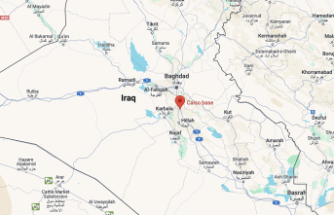The images of dead fish and birds bathed in the thickness of the crude have not taken to go around the world. The beaches of places as exclusive as Laguna and Newport Beach have thrown up to further notice - they could be weeks before they return to the public - and the spot on the water has a size superior to alcobendas, in another natural disaster Calcated for the History of California. The crude oil pouring from an oil platform that began on Saturday against Huntington Beach has thrown up 476,000 liters of oil to the sea until the causes are investigated.
The company behind the crisis, the Texana Amplify Energy, believes that it could have been the anchor of a large cargo ship that hit against the pipeline causing the catastrophe, although they have not reached a definitive conclusion. "We have examined 8,000 feet - a 2,500 meters-of Oleduct and we have isolated an area of specific interest," said Martyn Wilsher, the CEO of the company.
The company planned to send divers to verify the exact point of the flight that detected hours before with machines, about 8 kilometers from the coast of Huntington Beach, a spill that has stopped, according to the authorities on Sunday.
However, the damage is already done. Katrina Foley, Orange County Supervisor, indicated that the accident "has devastated the coastline and is having a tremendous impact on our ecological reserves as well as in the economic". Foley referred to the devastation caused by the crude in the Marsh Talbert wetlands, an area in which he had worked with the body of engineers of the United States Army to preserve fauna and flora for decades and that has been "completely destroyed in one day".
It is a situation that the Ecologist groups in California had been warning for years, not only concerned about oil platforms and offshore extractions but by high freight traffic, which authorities believe could have produced La Mancha. The incident occurred in an oleduct that joins the port of Long Beach, the second largest in the United States, with a platform known as Elly.
Despite the efforts of the Coast Guard and the rest of the county authorities to safeguard the beaches, the flora and fauna of the area, it is expected that the pouring will continue to stain the sand on the coast in the coming days. The beaches of Laguna Beach are still closed and any type of fishing activity has been banned, including crustaceans.
Until Sunday, the Coast Guard had managed to withdraw almost 12,000 liters of water raw, supported by a fleet of boats and four aircraft constantly flying the area.
It is not the first time that Huntington Beach suffers the consequences of an ecological catastrophe of this nature. In 1990 the discharge exceeded one and a half million liters after the helmet of an oil tanker breaks. In 1969, the devastation was even greater when the outbreak of one of the oil wells led to an environmental disaster in Santa Bárbara. And in the memory, the titanic catastrophes of Exxon Valdez in Alaska and that of the Deepwater Horizon in the Gulf of Mexico.
Date Of Update: 09 October 2021, 04:06











